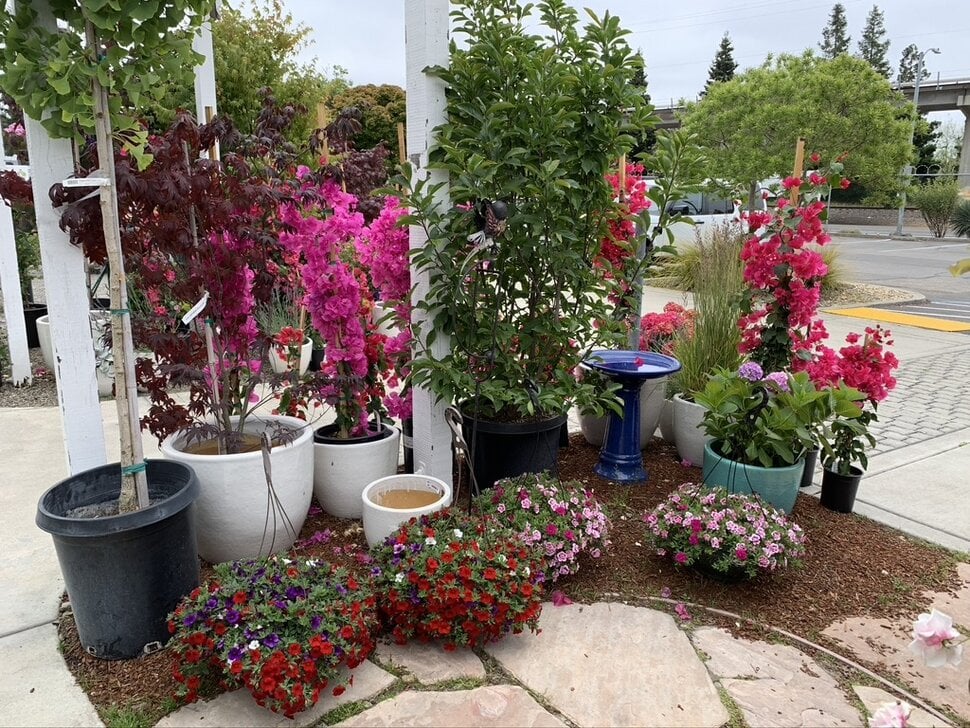How to Plant & Care for Your New Tree or Large Shrub: A Step-by-step Guide

Whether you're a seasoned gardener or an enthusiastic beginner, you will likely find yourself welcoming new trees or larger plants into your landscape. How do you ensure that these new arrivals in your garden transition successfully? Here’s a step-by-step guide that provides useful information to help your trees, bushes, and shrubs stay vibrant all year round.
The right time to plant trees and shrubs
When it comes to planting trees and shrubs, timing is an important factor. The best time to plant trees is usually during the fall season or in the very early spring when the weather is mild and the conditions are favorable for establishing the root system of a new, large plant in the ground. The best time to plant shrubs may vary from one type to another, so research the plant you’re interested in before you purchase.
The right way to plant something new
1. Select a suitable location
The requirements for sunlight and water vary from plant to plant. Understand the optimal conditions for your new plant and pick a spot in your garden that is most suitable. Consider factors such as soil drainage, ease of irrigation, hours of daylight throughout the seasons, and exposure to wind during storms.
2. Create the right-sized hole
You want to get the measurement right when it comes to digging a hole for your plant so that its roots have ample space to develop. The size of the hole should be approximately twice the width of your plant's root ball. The root ball is the mass of tangled roots you see when you remove a plant from its nursery pot and any loose soil falls away. Make sure that the hole has the correct depth to hold your plant without burying its crown. The crown is the area where the plant's roots meet its trunk or main stem. It should be at or slightly above ground level after transplanting.
3. Add compost for better growth
Blend good quality compost with the existing soil in the hole where you’re transplanting your new tree or shrub. Compost helps improve your garden’s soil structure, which will enable your plant to develop healthier roots. The addition of compost will also help the soil hold more nutrients and may discourage the onset of certain diseases and pests. The exact amount of compost you’ll need will be determined by the existing soil conditions and the size of the transplant hole. Generally, using a mix of half soil, half compost is a popular starting point.
The right way to provide ongoing care
1. Water at proper intervals
Newly planted trees or shrubs need more attention to watering care than their more established counterparts. A good regimen to follow would look like this:
*On the Day of Transplant - Give the transplanted tree or shrub and its surrounding area a good soak.
*For 1 – 2 weeks after planting: Pay attention to any signs of stress or dehydration in the plant. Water lightly only if your garden conditions have become extremely hot and dry. You do not want to overwater your new tree or shrub at this stage. It is far easier to revive a thirsty plant than to salvage one that has been severely overwatered.
*For 3 – 12 weeks after planting: Water every 2 to 3 days depending on the size of the plant and the weather conditions.
*After 12 weeks of planting: Water weekly or as needed depending on weather conditions.
2. Mulch your new plant
Spread a medium layer of mulch at the base of your newly planted tree or shrub to protect it from drought and extreme temperatures. The mulch will help conserve the water in the soil, which supports better nutrient cycling for your growing plant. Common types of mulch include grass clippings, shredded fir or redwood tree bark, and composted leaves. Re-apply mulch periodically as it will gradually break down over time.
3. Use an appropriate fertilizer
For healthy growth, your new plant will need a variety of nutrients that your soil may not readily provide. Fertilizers help bridge this gap by providing your plant with nitrogen, phosphorus, potassium and other essential nutrients. Make sure to moisten your plant’s soil before applying an appropriate fertilizer. It’s important to follow the recommended usage instructions to ensure that you don’t over-fertilize your plant.
4. Prune your plant
Once your tree or shrub is well established, it is essential to prune it periodically for a variety of reasons. It will give your plants better protection from diseases and pests, clear dead or overgrown stems, help develop an attractive shape, and contribute to healthy seasonal growth.
The recommended rule is to prune your trees and shrubs after they have fully completed flowering and fruiting, or to prune during seasonal dormancy. Pro tips: Clean your clippers before pruning and prune your plants during drier weather. Dirty clippers and wet conditions create opportunities for plant diseases to spread.
Evergreen Nursery: Your friendly garden experts in San Leandro
If you're looking for high-quality trees and shrubs along with helpful advice, visit us at Evergreen Nursery. Located on San Leandro Boulevard, we’re an undiscovered haven of trees, shrubs, perennials, succulents, vegetable starts, herbs, flowering annuals, fruiting plants, and more. We also carry a wide range of tools, bulk soils & mulches, and high quality products to care for your garden in all seasons.
Call us at (510) 632-1522 or drop by our nursery for a friendly chat with our knowledgeable staff. We look forward to guiding you to the right trees, plants or shrubs to enhance your garden landscape.



